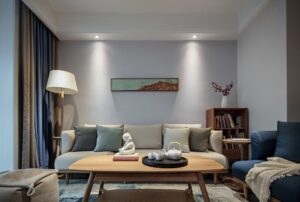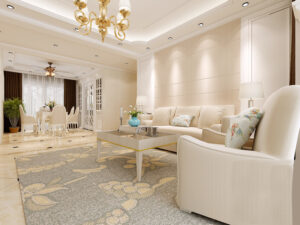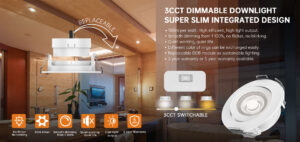Selecting the ideal LED downlight for your home can greatly improve both the visual appeal and functionality of your living environment. With the rapid advancements in lighting technology and design in 2025, there is an abundance of options available to suit diverse needs and tastes. This guide will provide you with essential insights for selecting LED downlights, helping you make a well-informed choice that reflects your style and meets your requirements.
Understanding LED Downlights
What Are LED Downlights?
LED downlights, commonly known as recessed lighting, are fixtures embedded in the ceiling that direct light downward. They are praised for their modern aesthetics, energy efficiency, and adaptability, making them perfect for residential and commercial settings. Unlike traditional incandescent or halogen bulbs, LED technology enables these fixtures to use significantly less energy while providing superior illumination.
LED downlights come in various designs and styles, allowing them to blend seamlessly into any interior decor. Their unobtrusive nature makes them a popular choice for homeowners looking to create a clean and sophisticated look. Additionally, they are available in different shapes—round, square, or even custom designs—giving you the flexibility to choose what best fits your space.

How Do LED Downlights Function?
LED downlights operate using light-emitting diodes (LEDs) powered by a low-voltage driver. Here’s a breakdown of their components:
- LED Chips: These produce light when an electrical current flows through them. They are more efficient than traditional bulbs, converting a higher percentage of energy into visible light.
- Heat Sink: This component dissipates heat generated during operation, helping to prolong the lifespan of the fixture. Efficient heat management is crucial for maintaining performance and longevity.
- Driver: The driver converts alternating current (AC) power from your electrical system to direct current (DC), ensuring that the LEDs receive the appropriate voltage and current.
- Housing: This secures the fixture within the ceiling, providing stability and protection for internal components.
This design allows for focused lighting, minimizing wasted energy compared to conventional bulbs. Moreover, many LED downlights are designed with adjustable features that allow users to change the angle of illumination, providing even greater versatility in lighting design.
Key Factors to Consider When Choosing LED Downlights
When selecting LED downlights, consider these important aspects:
1. Brightness (Measured in Lumens)
Brightness is a crucial factor in your selection process. The necessary lumens vary based on the room’s purpose:
- Ambient Lighting: For general illumination in living areas or bedrooms, aim for 300-500 lumens per downlight. This level creates a warm and inviting atmosphere without being overpowering.
- Task Lighting: Areas like kitchens or workspaces may need 500-800 lumens for focused activities such as cooking or reading. Higher lumens ensure that tasks can be performed safely and efficiently.
- Accent Lighting: To highlight artwork or architectural features, opt for 200-400 lumens. Accent lighting adds depth and interest to your space.
In residential settings, typical brightness ranges from 800 to 1600 lumens overall per room, while commercial spaces may require fixtures exceeding 2000 lumens for adequate visibility.
2. Color Temperature
Color temperature influences the mood of a room and is measured in Kelvins (K). Common options include:
- Warm White (2700K-3000K): Perfect for cozy spaces like living rooms or bedrooms where relaxation is key.
- Cool White (4000K-5000K): Best suited for kitchens and work areas where clarity is vital for tasks requiring focus.
- Daylight (5000K-6500K): Ideal for areas needing vibrant light, such as bathrooms or reading corners where bright light enhances visibility.
Choosing the right color temperature can significantly alter how a space feels and functions. Warmer tones create comfort and intimacy, while cooler tones promote alertness and productivity.
3. Dimming Capabilities
Dimmable LED downlights offer flexibility in light intensity, allowing you to adjust brightness according to activities or moods. This feature is especially useful in multi-purpose areas where lighting needs fluctuate throughout the day. For instance, you might want bright lights during family gatherings but softer lighting during movie nights.
Ensure compatibility between your dimmer switch and the LED fixtures to prevent flickering or performance issues. Some modern dimmers are specifically designed for LEDs to enhance compatibility and performance.
4. Beam Angle
The beam angle dictates how broadly light is dispersed from the fixture:
- Narrow Beam Angles (15°-30°): Ideal for accentuating specific areas or objects such as artwork or architectural details.
- Wide Beam Angles (60°-120°): Best suited for general illumination in larger spaces like living rooms or hallways where even light distribution is desired.
Selecting the right beam angle ensures even light distribution throughout your space while minimizing dark spots that can detract from overall visibility.
5. Size and Design
LED downlights come in various sizes, typically ranging from 4-inch to 8-inch diameters, as well as square and round designs. The size should complement your ceiling height and room dimensions; larger fixtures may be more appropriate for high ceilings while smaller models work well in cozier spaces.
Consider also how the design of the downlight fits with your overall decor theme—sleek modern designs can enhance contemporary spaces while more traditional styles may better suit classic interiors.
6. CRI (Color Rendering Index)
Select fixtures with a CRI of ≥90 for accurate color representation; this is particularly important in kitchens and retail environments where true color visibility is essential for tasks like food preparation or displaying products.
A higher CRI means colors appear more vibrant and true-to-life under the light source, enhancing visual appeal.
7. IP Rating
For areas exposed to moisture—like bathrooms or outdoor applications—choose an IP65 rating to ensure safety against water ingress. An appropriate IP rating protects against dust and moisture damage, extending the lifespan of your fixtures.
8. Installation Type
Consider:
- Retrofit Kits: Easy upgrades for existing fixtures without requiring extensive renovations.
- New Construction Housings: Suitable for newly renovated ceilings where new wiring may be installed.
Selecting the right installation type can simplify your project while ensuring optimal performance from your new lighting system.
9. Smart Features
Explore Wi-Fi-enabled downlights that allow voice control through devices like Alexa or Google Home. Smart downlights enable you to control lighting remotely via smartphone apps or voice commands, offering convenience and energy-saving possibilities through programmable schedules.
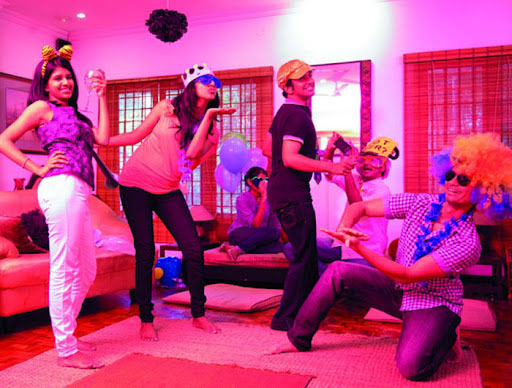
Benefits of Using LED Downlights
LED downlights provide numerous advantages that make them a favored choice for contemporary lighting solutions:
Energy Efficiency
Their energy consumption is significantly lower than traditional lighting options—up to 85% less than incandescent lights—leading to substantial savings on electricity bills over time. For example, ten halogen downlights might cost $458 annually while ten LED downlights would only cost $55—a remarkable difference!
Long Lifespan
The lifespan of up to 50,000 hours—much longer than traditional bulbs which last around 1,000 hours—means LED downlights reduce replacement frequency significantly. If used six hours daily, they could last approximately 23 years! This longevity not only saves you money but also minimizes waste associated with frequent bulb replacements.
Versatility
Their suitability for various applications—ambient, accent, task—and availability in different sizes and styles meet diverse needs; this versatility allows homeowners to customize their lighting solutions effectively based on specific requirements within each room!
Safety
Their lower heat emission compared to traditional lights reduces fire risks while being free from harmful substances like mercury; additionally emitting UV-free light helps protect artwork furnishings from fading over time!
Aesthetic Appeal
The sleek design integrates seamlessly into ceilings enhancing modern interior aesthetics; this unobtrusive nature allows homeowners create clean lines without compromising style!
Low Maintenance
Their durability means less frequent maintenance compared to traditional lights; this translates into lower replacement costs over time as well as reduced operational costs related maintenance efforts!
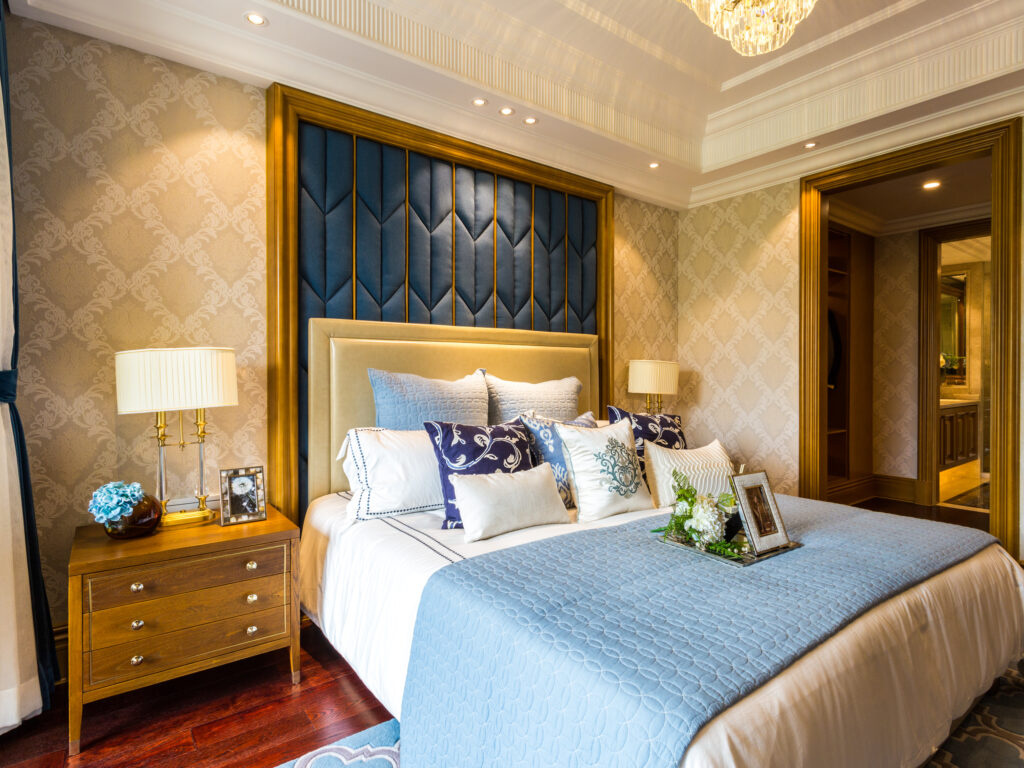
Selecting the Right LED Downlights for Different Rooms
This guide recommends types of LED downlights tailored specifically toward each room’s unique requirements—you can create an inviting atmosphere throughout every corner of your home!
LIVING ROOM
- Type: Dimmable Fixed and Adjustable Downlights
- Recommendation:Dimmable fixed downlights provide ambient lighting; adjustable ones effectively highlight artwork architectural features creating cozy atmosphere with warm white (3000K) options focusing light on specific areas like seating arrangements decorative elements!
KITCHEN
- Type: Bright Task Lighting Downlights
- Recommendation: Install high-lumen output downlights over countertops sinks ensuring adequate illumination during food preparation activities; consider using anti-glare recessed options producing around 600-800 lumens without harshness eyes!
BATHROOM
- Type: IP rating Downlights
- Recommendation: Select IP-rated downlights (at least IP44) positioned above sinks showers effective task lighting; warm white options provide relaxing ambiance ensuring bright light necessary grooming tasks like shaving applying makeup!
BEDROOM
- Type: Soft Warm White Downlights
- Recommendation: Use warm white LEDs (around 2700K) create calming environment conducive relaxation; adjustable options direct light towards reading nooks artwork creating inviting atmosphere perfect unwinding after long day!
HOME OFFICE
- Type: Cool White Daylight LED Downlights
- Recommendation: Opt cool white (4000K) downlights promote productivity enhancing focus during work sessions; dimmable features allow adjustments based tasks throughout day ensuring optimal conditions whether working detailed projects taking breaks!
HALLWAYS
- Type: Evenly Spaced Downlights
- Recommendation: Install fixtures at regular intervals along walkways providing consistent illumination enhancing safety during nighttime navigation; use fixtures emitting around 10-20 lumens per square foot ensuring adequate visibility without being overly bright!
BASEMENT
- Type: High-Lumen Output Downlights
- Recommendation: Brighten darker spaces high power LED downlights offering broad coverage suitable across various uses such gyms offices entertainment spaces etc.; adjustable options help tailor lighting based specific activities taking place within versatile area home!
Radians LED Downlights
Radians specializes producing high-quality downlights dedicated teams focused marketing production design innovation customization across various indoor lighting solutions including track lights, panel lights etc.; we also offer customized services tailored specifically dealers—from product design, exclusive sales policy, laboratory testing, certification all way through final delivery ensuring our clients receive exactly what they need!
Located Foshan City Radians operates state-of-the-art manufacturing facility dedicated innovation prioritizing quality control efficiency sustainability practices within our processes—we understand importance meeting client expectations delivering exceptional results every time! Our research development team collaborates closely clients creating advanced products meeting unique specifications based upon individual requirements providing comprehensive support throughout entire project lifecycle!
For more information about Radians our extensive offerings please contact our customer service team—we’re here assist you every step way!
Conclusion
Choosing right LED downlights requires balancing brightness color temperature functionality specific needs within home environment; by focusing factors such as beam angle dimmability IP ratings—you’ll enhance both aesthetics efficiency throughout space! Ready elevate atmosphere? Start by assessing room’s lighting requirements exploring latest innovations available within world led technology today!
FAQs
Q: What are different types of LED downlights?
A: LED downlights come various styles including fixed downlight (for general lighting), adjustable downlight (for highlighting specific areas), surface-mounted downlight (easy installation), recessed downlight(for sleek appearance). Sizes vary too—6-inch fixtures common residential use but larger rooms may benefit wider options designed accommodate greater coverage needs effectively!
Q: How long do LED downlights last?
A: Typically lasting up 50,000 hours—much longer than traditional incandescent halogen bulbs which last around only about 1,000 hours—LEDs significantly reduce replacement frequency saving money maintenance efforts over time! If used six hours daily they could last approximately twenty-three years!
Q: Are LED downlights energy-efficient?
A: Absolutely! They convert more energy into visible light producing less heat consuming less power compared traditional options available today! Studies indicate they can save up eighty-five percent energy compared incandescent lights 45% compact fluorescent lamps—helping lower electricity bills minimize carbon footprints significantly!



